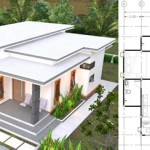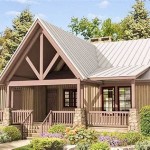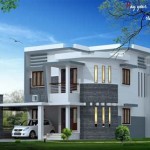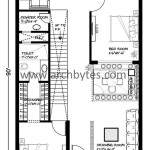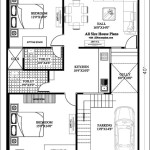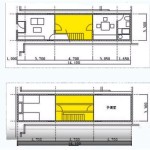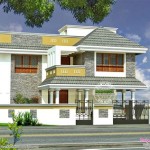Small Mansions: House Plans That Maximize Space and Elegance
The term "small mansion" might seem like an oxymoron, but it accurately describes a growing trend in residential architecture. These homes, generally larger than the average single-family dwelling but significantly smaller than traditional mansions, prioritize efficient space utilization, luxurious amenities, and sophisticated design, all within a manageable footprint. Small mansion house plans are increasingly popular among individuals and families who desire a comfortable and elegant living environment without the exorbitant upkeep and maintenance costs associated with sprawling estates. These plans focus on maximizing the perceived size and functionality of a home through strategic design choices, careful material selection, and innovative use of technology. This article explores the key characteristics, considerations, and benefits of small mansion house plans, providing a comprehensive overview for those seeking to build a luxurious yet practical home.
Defining the "Small Mansion": Size and Style
Defining the "small mansion" requires establishing parameters beyond simply square footage. While there is no universally accepted size threshold, these homes typically range from 3,000 to 5,000 square feet. This size offers ample space for comfortable living without reaching the scale of a traditional mansion, which can easily exceed 8,000 square feet or more. The distinction lies not just in the size, but also in the design philosophy. Small mansion plans prioritize quality over quantity, focusing on high-end finishes, bespoke details, and customized features that enhance the overall living experience.
The architectural style of a small mansion can vary widely, reflecting the owner's personal preferences and the surrounding environment. Some popular styles include: *
Modern Farmhouse:
Blending rustic charm with contemporary design elements, often featuring large windows, open floor plans, and natural materials. *Traditional Colonial:
Characterized by symmetrical facades, formal living spaces, and classic architectural details. *Mediterranean Revival:
Evoking the charm of Mediterranean villas with stucco exteriors, tile roofs, and arched doorways. *Contemporary:
Showcasing clean lines, minimalist aesthetics, and innovative use of space and materials. *Craftsman:
Emphasizing handcrafted details, natural materials, and a warm, inviting atmosphere.Regardless of the chosen style, small mansion plans share a common goal: to create a sense of grandeur and sophistication within a relatively modest footprint.
Key Features of Small Mansion House Plans
Small mansion house plans often incorporate several key features to maximize space, enhance functionality, and create a luxurious living environment. These features are carefully integrated into the design to ensure a cohesive and aesthetically pleasing result.
*Open Floor Plans:
Open floor plans are a cornerstone of modern small mansion design. By eliminating unnecessary walls and partitions, these plans create a sense of spaciousness and facilitate seamless flow between different living areas. This design approach also allows for better natural light penetration, further enhancing the feeling of openness and airiness. The kitchen, dining area, and living room are often combined into a single, expansive space, perfect for entertaining and family gatherings. *High Ceilings and Large Windows:
High ceilings and large windows are essential for creating a sense of grandeur and maximizing natural light. High ceilings make rooms feel larger and more spacious, while large windows provide ample natural light and offer stunning views of the surrounding landscape. These features also contribute to better ventilation and improve the overall indoor air quality. Strategic placement of windows can also create a sense of privacy while still allowing for ample natural light. *Luxurious Master Suites:
The master suite is a sanctuary within the home, designed for relaxation and rejuvenation. Small mansion plans typically feature spacious master suites with luxurious amenities such as walk-in closets, spa-like bathrooms with soaking tubs and separate showers, and private balconies or patios. These suites are designed to provide a comfortable and private retreat for the homeowners. *Gourmet Kitchens:
The kitchen is often the heart of the home, and small mansion plans typically feature gourmet kitchens equipped with high-end appliances, custom cabinetry, and ample counter space. These kitchens are designed for both functionality and aesthetics, providing a space for culinary creativity and social gatherings. Features may include large islands with seating, walk-in pantries, and professional-grade appliances. *Outdoor Living Spaces:
Outdoor living spaces are an integral part of the small mansion lifestyle. Plans often incorporate features such as covered patios, outdoor kitchens, swimming pools, and landscaped gardens. These spaces provide opportunities for relaxation, entertainment, and enjoying the surrounding environment. Thoughtful design ensures seamless integration between indoor and outdoor living areas, creating a cohesive and inviting atmosphere. *Smart Home Technology:
Integrating smart home technology is another key feature of modern small mansion plans. This technology can automate various aspects of the home, such as lighting, temperature control, security, and entertainment, making the home more comfortable, efficient, and secure. Smart home systems can also be controlled remotely, allowing homeowners to manage their homes from anywhere in the world.Considerations When Choosing a Small Mansion House Plan
Selecting the right small mansion house plan requires careful consideration of several factors, including budget, lifestyle, site characteristics, and local building codes. A thorough understanding of these considerations is essential for ensuring a successful and satisfying building experience.
*Budget:
Establishing a realistic budget is the first and most crucial step in the planning process. The cost of building a small mansion can vary significantly depending on the size, style, materials, and level of customization. It is essential to obtain accurate cost estimates from reputable builders and contractors and to factor in all associated expenses, such as land acquisition, permits, architectural fees, and landscaping. *Lifestyle:
The chosen house plan should reflect the homeowners' lifestyle and needs. Consider factors such as the number of occupants, the need for home offices, the desire for entertainment spaces, and the importance of outdoor living. The layout and design of the home should be tailored to accommodate these specific requirements, ensuring a comfortable and functional living environment. *Site Characteristics:
The characteristics of the building site can significantly impact the design of the home. Factors such as the size and shape of the lot, the topography, the orientation, and the surrounding environment should be carefully considered. The house plan should be designed to take advantage of the site's natural features, such as views, sunlight, and prevailing winds. *Local Building Codes and Regulations:
Compliance with local building codes and regulations is essential for ensuring the safety and legality of the construction project. These codes govern various aspects of the building process, such as structural integrity, fire safety, energy efficiency, and accessibility. It is important to consult with local building officials and obtain all necessary permits before starting construction. *Future Needs:
Consider potential future needs when selecting a house plan. Will the family be growing? Will aging in place be a consideration? Selecting a plan that can accommodate future changes and adapt to evolving needs is essential for ensuring long-term satisfaction. This may involve choosing a plan with flexible spaces or designing the home with accessibility features. *Sustainability:
Sustainability is increasingly important to homeowners, and incorporating sustainable design principles into the house plan can significantly reduce the home's environmental impact. This can involve using sustainable materials, implementing energy-efficient technologies, and designing the home to maximize natural light and ventilation.
Mini Mansion House Plans 12 Extra Rooms Building Print Gallery Floor Plan Luxury

Two Story 5 Bedroom Tudor Mansion Floor Plan Model House Wooden Plans

Mansion Floor Plans Top No Layouts Design Ideas Architecture

Turn Up The Luxe With 9 Must See Modern Mansion Floor Plans Houseplans Blog Com

2 Story House Plans Small Mansion Farmhouse Modern More Blog Floorplans Com

28 Modern House Designs Floor Plans And Small Ideas

Small Luxury House Plans Sater Design Collection Home

10 Small House Plans With Dreamy Amenities Blog Dreamhomesource Com

Mansion Floor Plans Blueprints House Layout Designs Houseplans Com

27 Adorable Free Tiny House Floor Plans Craft Mart


